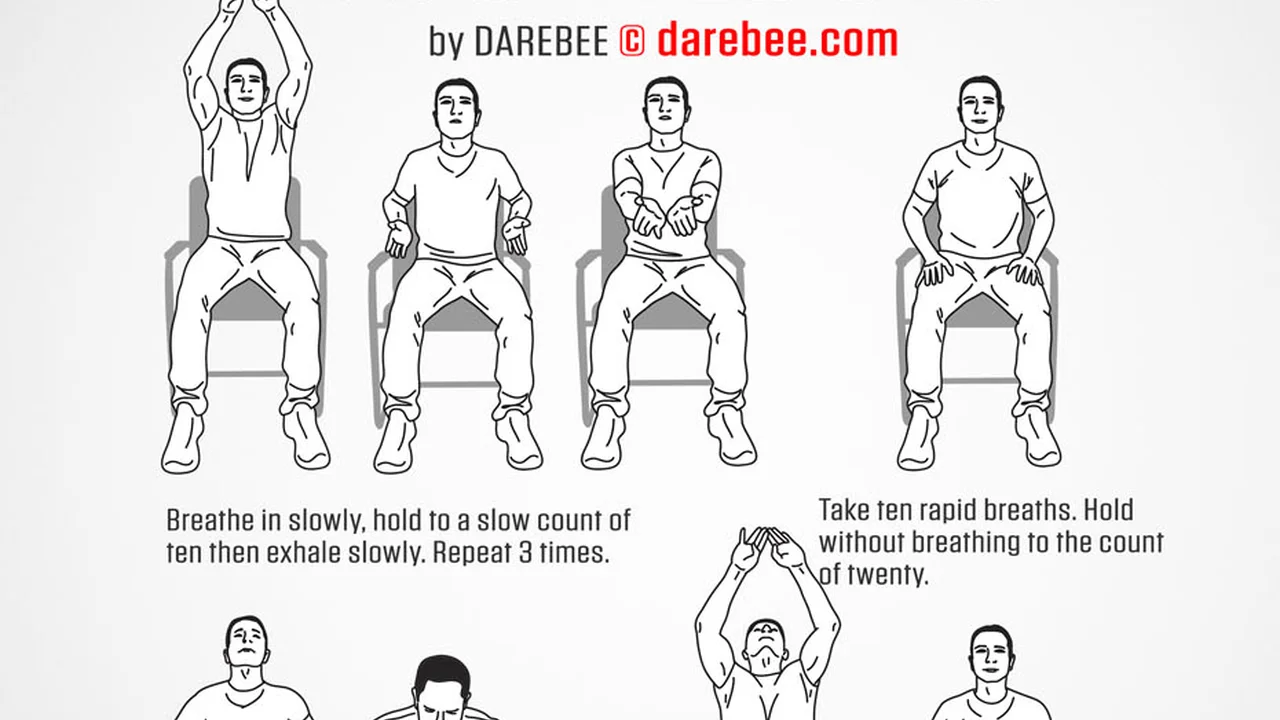Ankle Pain_ Causes and Prevention Strategies

for Street Workout Wisdom Mastering Muscle Ups safely. Dive into the world of muscle ups with this comprehensive guide focusing on safety, injury prevention, and performance enhancement. Discover essential techniques, warm-up routines, and equipment recommendations to elevate your street workout game.
Understanding the Muscle Up Mechanics and Biomechanics
The muscle up, a coveted feat of strength and coordination in street workout and calisthenics, combines the pull-up and dip into a fluid, powerful movement. But before you even think about attempting one, let’s break down the biomechanics involved. It's not just about raw strength; it's about understanding how your body moves, engages specific muscle groups, and leverages momentum. Think of it as a dance, a synchronized interplay of power and finesse.
Essentially, the muscle up involves three distinct phases: the pull, the transition, and the dip. Each phase demands specific muscle activation and proper technique. During the pull, you're engaging your lats, biceps, rear deltoids, and rhomboids. The transition, arguably the most challenging part, requires explosive power from your chest, triceps, and shoulders, along with a significant amount of core stabilization. Finally, the dip utilizes your chest, triceps, and anterior deltoids to push you above the bar.
Understanding these mechanics is crucial for injury prevention. If you're relying solely on momentum or compensating with improper form, you're putting undue stress on your joints, particularly your shoulders and elbows. This can lead to a variety of issues, including rotator cuff tears, elbow tendinitis, and wrist pain. So, let’s get this right from the start.
Essential Pre Muscle Up Warm Up Exercises and Mobility Drills
Before you even think about touching the bar, a thorough warm-up is non-negotiable. Consider this your pre-flight check, ensuring all systems are go. A proper warm-up increases blood flow to your muscles, improves joint mobility, and prepares your nervous system for the demands of the muscle up. Skimping on this step is like driving a cold engine – you're just asking for trouble.
Start with some dynamic stretching. Arm circles (forward and backward), leg swings (forward and sideways), and torso twists are excellent for increasing range of motion. Next, incorporate some muscle-specific activation exercises. Scapular retractions and protractions, band pull-aparts, and face pulls will target the muscles responsible for shoulder stability and injury prevention. These exercises help to “wake up” the muscles that are often neglected in everyday life.
Don’t forget about wrist mobility! Spend a few minutes performing wrist circles, extensions, and flexions. The wrists are often overlooked but are crucial for gripping the bar and supporting your body weight. And finally, include some light cardio, such as jumping jacks or high knees, to raise your core temperature and get your heart pumping.
Here’s a sample warm-up routine:
- Arm circles (forward and backward): 2 sets of 15 reps
- Leg swings (forward and sideways): 2 sets of 10 reps per leg
- Torso twists: 2 sets of 15 reps
- Scapular retractions and protractions: 2 sets of 15 reps
- Band pull-aparts: 2 sets of 15 reps
- Face pulls: 2 sets of 15 reps
- Wrist circles, extensions, and flexions: 2 sets of 20 reps
- Jumping jacks: 2 minutes
Building a Solid Foundation Mastering Pull Ups and Dips
You wouldn’t build a house on a shaky foundation, and the same principle applies to the muscle up. Before attempting this advanced movement, you need to have a solid base of strength in both pull-ups and dips. These are the building blocks upon which your muscle up success will be built.
Aim to perform at least 10-15 strict pull-ups with proper form. This means no kipping, no swinging, just a controlled, full range of motion. Focus on engaging your lats and pulling with your back, not just your arms. If you can’t perform that many pull-ups, work on progressions like assisted pull-ups, negative pull-ups (slowly lowering yourself from the top position), and lat pulldowns.
Similarly, you should be able to perform at least 15-20 dips with good form. Lower yourself until your shoulders are below your elbows, and then push back up to a full lockout. If you struggle with dips, use assisted dip machines or perform them on parallel bars with your feet on the ground for assistance. Weighted dips can also be incorporated to further strengthen the muscles used in the muscle up.
The key is consistency. Dedicate time to these fundamental exercises, and you’ll see significant improvements in your overall strength and muscle up potential.
Mastering the Transition The Secret to a Successful Muscle Up
The transition is often considered the most challenging part of the muscle up. It's the point where you shift from pulling yourself up to pushing yourself over the bar. This requires explosive power, precise timing, and a significant amount of core stability. Many people get stuck at this stage, unable to complete the movement.
One effective drill to practice the transition is the kipping muscle up. While strict muscle ups are the ultimate goal, the kipping variation can help you develop the necessary momentum and coordination. Start with a slight swing and use your hips to generate power as you pull yourself towards the bar. Focus on pulling the bar as high as possible and then quickly transitioning your body over the bar.
Another helpful exercise is the negative muscle up. Jump to the top position of the muscle up (above the bar) and then slowly lower yourself down, focusing on controlling the transition phase. This will help you build strength and awareness in the muscles involved in the transition.
Finally, practice explosive pull-ups. Focus on pulling yourself up as quickly and forcefully as possible. This will help you develop the power needed to propel yourself over the bar during the transition.
Grip Variations Optimizing Your Hand Placement for Muscle Ups
Your grip plays a crucial role in the success of your muscle up. Different grip variations can affect your leverage, power, and overall comfort. Experiment with different grips to find what works best for you.
The most common grip is the false grip. This involves wrapping your wrists over the bar, rather than just holding onto it with your fingers. The false grip provides a more secure and stable grip, allowing you to pull yourself higher and transition more easily. However, it can take some getting used to and may be uncomfortable at first. Use wrist wraps initially to help with the discomfort.
Another option is the regular grip, where you simply hold onto the bar with your fingers. This grip is less stable than the false grip, but it may be more comfortable for some people. If you're using the regular grip, focus on pulling the bar as high as possible and then quickly transitioning your body over the bar.
Some people also prefer a mixed grip, where one hand uses the false grip and the other uses the regular grip. This can provide a combination of stability and comfort. Experiment and see which grip feels most natural and powerful for you.
Progressive Overload Strategies Increasing Muscle Up Difficulty Over Time
Once you've mastered the basic muscle up, it's time to start challenging yourself and pushing your limits. Progressive overload is the key to continued progress and strength gains. This involves gradually increasing the demands on your muscles over time.
One way to implement progressive overload is to add weight to your muscle ups. Use a weight vest or a dip belt to increase the resistance. Start with a small amount of weight and gradually increase it as you get stronger. Focus on maintaining proper form and control throughout the movement.
Another strategy is to increase the number of repetitions you perform. Aim to perform more muscle ups in each set. You can also increase the number of sets you perform. For example, if you're currently doing 3 sets of 5 muscle ups, try increasing it to 4 sets of 5 muscle ups, or 3 sets of 6 muscle ups.
You can also try variations of the muscle up to increase the difficulty. Archer muscle ups, where you extend one arm out to the side during the dip, are a challenging variation that requires significant strength and stability. Another variation is the muscle up to handstand, where you push yourself all the way up into a handstand position.
Common Muscle Up Mistakes and How to Correct Them
Even with proper training and preparation, it's easy to make mistakes when performing muscle ups. Identifying and correcting these mistakes is crucial for injury prevention and performance enhancement.
One common mistake is using too much momentum. While kipping can be helpful for learning the transition, relying solely on momentum can lead to improper form and increased risk of injury. Focus on using your muscles to pull yourself up and over the bar, rather than just swinging your body.
Another mistake is not engaging your core. A strong core is essential for stability and control during the muscle up. Focus on bracing your core throughout the movement and maintaining a neutral spine. Avoid arching your back or letting your hips sag.
Some people also fail to use a full range of motion. Make sure you're pulling yourself up as high as possible during the pull-up phase and lowering yourself down as far as possible during the dip phase. This will help you develop strength and flexibility in all the muscles involved in the muscle up.
Finally, don't neglect proper form. Focus on maintaining a straight line from your head to your heels throughout the movement. Avoid rounding your shoulders or letting your elbows flare out.
Nutrition and Recovery Fueling Your Body for Muscle Up Success
Training is only one piece of the puzzle. Proper nutrition and recovery are equally important for optimizing your muscle up performance and preventing injuries. You need to fuel your body with the right nutrients to support muscle growth, repair, and energy production.
Ensure you're consuming enough protein to support muscle protein synthesis. Aim for at least 1 gram of protein per pound of body weight. Good sources of protein include lean meats, poultry, fish, eggs, dairy products, and plant-based sources like beans, lentils, and tofu.
Carbohydrates are your body's primary source of energy. Choose complex carbohydrates like whole grains, fruits, and vegetables over simple sugars. These will provide sustained energy throughout your workouts and help replenish your glycogen stores.
Don't forget about healthy fats. They're essential for hormone production, cell function, and nutrient absorption. Good sources of healthy fats include avocados, nuts, seeds, olive oil, and fatty fish.
Adequate rest and recovery are also crucial. Aim for at least 7-8 hours of sleep per night. Sleep is when your body repairs and rebuilds muscle tissue. You should also incorporate active recovery days into your training schedule. This could involve light cardio, stretching, or foam rolling.
Equipment Recommendations for Muscle Up Training
While you can perform muscle ups with just a pull-up bar, certain pieces of equipment can enhance your training and help you progress faster.
Pull-Up Bar: A sturdy and reliable pull-up bar is essential. Look for one that can support your weight and is easy to grip. Consider a doorway pull-up bar, a wall-mounted pull-up bar, or a freestanding pull-up station. I personally recommend the Titan Fitness Wall Mounted Pull-Up Bar. It's sturdy, affordable (around $70), and easy to install.
Resistance Bands: Resistance bands can be used for assisted pull-ups and dips, making them a great tool for beginners. They can also be used for mobility drills and warm-up exercises. The Serious Steel Fitness Resistance Bands are a great option. A set of varying resistances costs around $50.
Weight Vest: A weight vest can be used to add resistance to your muscle ups, making them more challenging. Look for one that is comfortable and adjustable. The Hyperwear Hyper Vest Pro is a high-quality option, but it's pricier (around $250). A more affordable option is the RUNFast/Max Adjustable Weighted Vest, which costs around $70.
Wrist Wraps: Wrist wraps can provide support and stability to your wrists, especially when using the false grip. The Harbinger Red Line Wrist Wraps are a popular choice. They cost around $20.
Injury Prevention Strategies Protecting Your Shoulders and Elbows
Muscle ups are a demanding exercise that can put a lot of stress on your shoulders and elbows. Implementing injury prevention strategies is crucial for staying healthy and avoiding setbacks.
Proper warm-up is essential. As discussed earlier, a thorough warm-up prepares your muscles and joints for the demands of the exercise.
Focus on proper form. Avoid using too much momentum or compensating with improper technique. Maintain a straight line from your head to your heels and engage your core throughout the movement.
Listen to your body. If you're feeling pain, stop and rest. Don't try to push through pain, as this can lead to more serious injuries.
Strengthen your rotator cuff muscles. These muscles are responsible for stabilizing your shoulder joint. Exercises like external rotations, internal rotations, and scapular retractions can help strengthen your rotator cuff muscles.
Stretch your chest and shoulder muscles regularly. Tight chest and shoulder muscles can contribute to shoulder pain and injuries. Stretching these muscles can improve your range of motion and reduce your risk of injury.
Integrating Muscle Ups into Your Street Workout Routine
Now that you've mastered the muscle up, it's time to integrate it into your street workout routine. Muscle ups can be a valuable addition to your training, helping you build strength, power, and coordination.
Start by incorporating muscle ups into your existing pull-up and dip workouts. Replace some of your pull-up and dip sets with muscle up sets. For example, if you're currently doing 3 sets of 10 pull-ups and 3 sets of 15 dips, try doing 2 sets of 8 pull-ups, 1 set of 5 muscle ups, 2 sets of 12 dips, and 1 set of 5 muscle ups.
You can also create a dedicated muscle up workout. This could involve performing multiple sets of muscle ups with varying levels of difficulty. For example, you could do 3 sets of 5 strict muscle ups, 3 sets of 8 kipping muscle ups, and 3 sets of 10 negative muscle ups.
Don't be afraid to experiment and find what works best for you. The key is to be consistent and gradually increase the difficulty of your workouts over time.
Advanced Muscle Up Variations Taking Your Training to the Next Level
Once you've mastered the basic muscle up, there are numerous advanced variations you can try to challenge yourself and further develop your strength and skills.
Archer Muscle Up: As mentioned earlier, the archer muscle up involves extending one arm out to the side during the dip phase. This variation requires significant strength and stability.
Muscle Up to Handstand: This variation involves pushing yourself all the way up into a handstand position after completing the muscle up. This requires a high level of strength, balance, and coordination.
One-Arm Muscle Up: The one-arm muscle up is arguably the most challenging muscle up variation. It requires immense strength and control and is a testament to years of dedicated training.
Ring Muscle Up: Performing muscle ups on rings adds an element of instability, making the exercise more challenging and engaging more stabilizer muscles.
Remember to progress gradually and master the basics before attempting these advanced variations. Focus on maintaining proper form and control throughout the movement.
Staying Motivated and Consistent on Your Muscle Up Journey
Learning the muscle up takes time, patience, and dedication. It's easy to get discouraged along the way, but staying motivated and consistent is crucial for achieving your goals.
Set realistic goals. Don't expect to master the muscle up overnight. Break down the process into smaller, more manageable steps. For example, focus on improving your pull-up and dip strength before attempting the transition.
Track your progress. This will help you see how far you've come and stay motivated. Keep a training journal or use a fitness app to track your workouts and progress.
Find a training partner. Working out with a friend can help you stay accountable and motivated. You can also learn from each other and provide support.
Celebrate your successes. Acknowledge and celebrate your achievements, no matter how small. This will help you stay positive and motivated.
Remember why you started. When you're feeling discouraged, remind yourself of your initial goals and motivations. This will help you stay focused and committed.
:max_bytes(150000):strip_icc()/277019-baked-pork-chops-with-cream-of-mushroom-soup-DDMFS-beauty-4x3-BG-7505-5762b731cf30447d9cbbbbbf387beafa.jpg)






